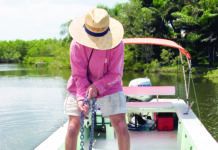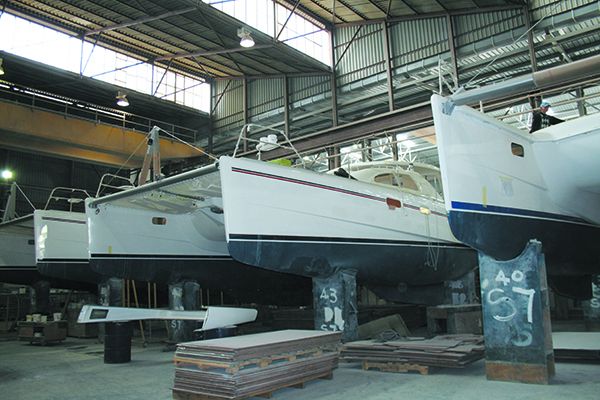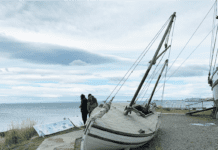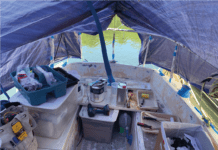This month’s study in multihull stability reminded me how deep an impression that first multihull capsize can leave on a sailor. I grew up just a few miles from Miami’s Hobie Beach, on Rickenbacker Causeway, where you could back a trailer up to the flat beside the Miami Seaquarium (Home of Flipper), step the mast, and shove off into the blue-green waters of Biscayne Bay.
My Virgil into the dark magic of turning boats upside down was Dan Ward, an older classmate at Coral Gables High School. Dan had an 18-foot Prindle that lived on a trailer at his house near the school. The arrangement fostered an acute awareness of wind conditions—especially on math test days—and no doubt helped point Dan toward his current occupation
For more than 35 years, Dan has been the owner of Skyward Kites, a Miami Beach landmark for kite enthusiasts. billed as having “the city’s largest selection of kites, windsocks and wind spinners.”
Wind spinners is a good name for the trusting souls who would join Dan on his Prindle when the seabreeze was up. By my recollection, there were three types of capsizes.
The slow-motion capsize was a form of torture, when one-by-one, each of us would slide to the leeward side until the hull buried, and the boat went over. In the ‘sneaky catapult,’ Ward would steer the boat to the venturi slot where the wind funneled through Bear Cut. He’d distract us by pointing at a dolphin or pelican as he sheeted in the mainsail and the “Bear Cut boost” levered the boat over.
The third type of capsize were the ones that caught even Dan off guard. Sometimes a blast of cold air from a squall would flip the boat. Other times, the wake from a passing power boat would help drive the lee bow under. But by the end of that first summer I sailed with Dan, there no more accidental capsizes. The skipper knew the boat too damn well.
In this month’s report, Technical Editor Drew Frye reminds us that there is a world of difference between the beach cat that launched us into Biscayne Bay and the plush cruising catamarans that are so popular in the Caribbean charter fleet. The conditions that topple a big, conservatively designed cruising cat are survival storms that would put any boat in jeopardy—as illustrated in the Queen’s Birthday Storm of 1994 (www.youtube.com/watch?v=Aa7KxGtUlAA).
The difference between monohull and multihull, as Frye explains, is that the multihull skipper has to be more alert to situations that might contribute to a capsize. In a cruising multihull, this means paying attention to sea conditions and how the boat is behaving in the waves. In a performance cat, this means being reefed down long before a squall arrives.
Years after my first capsize on Dan’s Prindle, I was among several journalists invited to sail aboard Peter Johnston’s 62-foot Gunboat Tribe as she flew across Narragansett Bay at 23 knots. Though the boat was a far cry from Dan’s tender craft, while watching Johnston handle his boat with such casual confidence, I was struck by the same notion I had sailing with Dan: It is the skipper who capsizes the multihull, not the other way around.





































